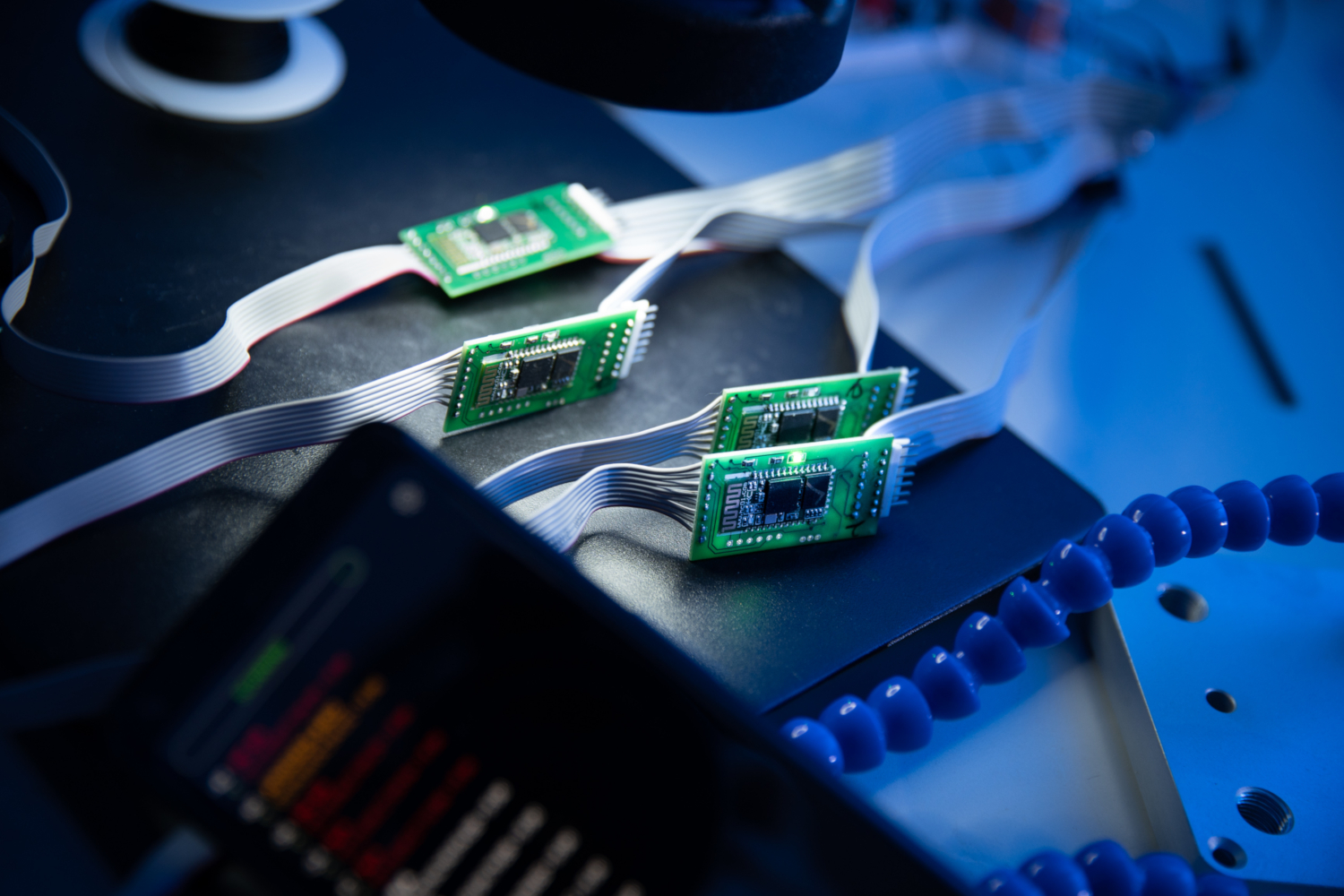When it comes to keeping your electronics cool, the choice between active and passive heat sinks can feel like navigating a labyrinth of options. Whether you’re a seasoned engineer or a DIY enthusiast, understanding the differences is crucial for optimizing performance and prolonging the life of your devices.
In this blog post, we’ll dive into the heated debate—pun intended!—active versus passive heat sinks. We’ll explore their unique benefits, ideal applications, and how to determine which cooling solution aligns best with your specific needs. So grab your toolbox and let’s unravel the science behind thermal management together!
What are Active and Passive Heat Sinks?
Heat sinks are important for managing heat in electronic devices, preventing overheating, and ensuring smooth performance. They come in two main types: active and passive heat sinks, each with its own way of dissipating heat.
Passive Heat Sinks
Passive heat sinks rely on natural convection and conduction to disperse heat. They are made from thermally conductive materials like aluminum or copper and often feature finned designs that maximize surface area. This allows heat to spread and dissipate into the surrounding air without requiring any moving parts.
Key Features
- No fans or pumps, meaning silent operation
- Reliable and low maintenance since there are no mechanical components to wear out
- Energy-efficient, as they do not consume power
Limitations
- Cooling efficiency depends on ambient airflow, which may not be sufficient for high-performance devices
- Can be bulkier to increase surface area for better heat dissipation
Active Heat Sinks
Active heat sinks incorporate fans, pumps, or liquid cooling systems to force air or coolant over the heat sink, accelerating heat dissipation. These systems actively move heat away from the component, making them more effective for high-power applications like gaming PCs, high-performance computing, and industrial electronics.
Key Features
- Superior cooling performance for high-heat applications
- Effective in compact spaces where passive cooling may not be enough
- Can quickly reduce temperatures even under heavy workloads
Limitations
- Consumes power (from the fan or pump)
- Requires maintenance, such as cleaning or replacing fans
- Can produce noise from moving parts
Choosing Between Active and Passive Heat Sinks
The best option depends on your device’s cooling requirements and environment:
- For silent, energy-efficient applications (e.g., small electronics, embedded systems) → Passive heat sink
- For high-performance or heat-intensive applications (e.g., gaming PCs, industrial equipment) → Active heat sink
Understanding the differences between these cooling solutions helps in selecting the right one for your needs, ensuring long-lasting performance and efficiency.
Key Factors to Consider When Choosing
When selecting a thermal pad, various factors affect performance, longevity, and suitability for specific applications. Here’s a breakdown of key considerations:
-
Silicone vs. Non-Silicone Thermal Pads
Silicone Thermal Pads
Silicone-based thermal pads are the most common type due to their flexibility, durability, and ease of application. They provide good thermal conductivity, making them suitable for a wide range of cooling applications.
However, they may experience oil bleed over time, which can potentially cause issues in sensitive electronics by contaminating components or reducing heat transfer efficiency.
Non-Silicone Thermal Pads
Non-silicone thermal pads are ideal for applications where silicone contamination must be avoided, such as in optics, medical devices, and certain electronics.
They typically have lower oil bleed and reduced outgassing, making them more stable over time. However, they can be more expensive and less flexible compared to silicone-based pads, which may affect ease of installation and surface conformity.
-
Oil Bleed
Oil bleed occurs when silicone oil seeps out of thermal pads over time. This can lead to performance degradation and may even damage electronic components by causing contamination or reducing heat transfer efficiency.
To avoid this issue, consider using non-silicone thermal pads or high-quality, low-bleed silicone pads that minimize oil migration while maintaining effective thermal performance.
-
Thermal Conductivity
Thermal conductivity, measured in W/mK (watts per meter-Kelvin), determines how efficiently a thermal pad transfers heat. Higher values mean better heat dissipation.
Most thermal pads have conductivity ratings between 1.2 W/mK and 25 W/mK, but high-performance pads can exceed 25 W/mK for demanding applications.
Choosing the right thermal conductivity depends on your cooling needs—higher values are ideal for high-power components like CPUs, GPUs, and power electronics, where efficient heat transfer is crucial.
-
Thickness
Thermal pads come in different thicknesses, typically between 0.5mm and 8.0mm. Thicker pads are useful for filling larger gaps between components, but they can sometimes reduce thermal performance by increasing resistance to heat flow.
The ideal thickness depends on how flat the surfaces are and how much space exists between components. To get the best heat transfer, use the thinnest pad that still provides full contact between the surfaces.
-
Compressibility
The ability of a thermal pad to conform to uneven surfaces depends on its compressibility. A highly compressible pad can fill in tiny gaps and irregularities between surfaces, ensuring better contact and improving heat transfer by reducing air pockets that can act as insulators.
However, if the pad is too compressible, excessive pressure may be applied to sensitive components, potentially causing mechanical stress or damage to delicate parts like circuit boards or chips. Finding the right balance in compressibility is key to achieving optimal thermal performance while protecting the components.
-
Environmental Conditions
When choosing thermal pads, think about factors like heat, humidity, and exposure to dirt or chemicals, as these can affect how well the pad works and how long it lasts.
Some thermal pads are built for extreme conditions and can function effectively in temperatures ranging from -50°C to 200°C. This makes them ideal for use in heavy-duty equipment, high-performance electronics, and automotive parts.
For durability, pick thermal pads made from materials that resist oxidation (rusting or breakdown over time), UV damage (from sunlight or artificial light), and chemical wear (from oils, solvents, or other substances). Choosing the right materials helps maintain good heat transfer and extends the life of your devices.
By evaluating these factors, you can select the best thermal pad for your cooling needs, ensuring optimal heat dissipation and device longevity.
Comparing Use Cases: When to Choose an Active or Passive Heat Sink
When to Choose an Active Heat Sink
Active heat sinks are ideal for applications requiring high cooling efficiency due to increased heat generation. Choose an active solution if:
- You have high-performance computing systems, such as gaming PCs, servers, or industrial processors, where intense workloads generate significant heat.
- The device operates under high loads or in hot environments, where passive cooling may not be sufficient.
- Precise temperature control is essential to prevent thermal throttling and maintain system performance.
When to Choose a Passive Heat Sink
Passive heat sinks work best for low-power applications and environments where noise or space constraints matter. Opt for a passive solution if:
- You are cooling low-power electronics, such as home theater systems, embedded devices, or routers, where heat output is minimal.
- Your application requires a silent operation, like audio equipment, medical devices, or fanless industrial computers.
- There is limited space for additional cooling components, and natural convection is sufficient to dissipate heat.
By understanding these use cases, you can determine the most efficient and practical heat sink solution for your specific cooling needs.
Final Thoughts: Making the Right Cooling Choice
Choosing between active and passive heat sinks ultimately comes down to your performance requirements, noise tolerance, space constraints, and energy efficiency needs. Active heat sinks offer superior cooling power, making them ideal for high-performance computing, industrial electronics, and compact devices with high heat output.
On the other hand, passive heat sinks provide silent, low-maintenance, and energy-efficient cooling, perfect for consumer electronics, fanless embedded systems, and medical applications. By carefully evaluating your device’s thermal demands and operating environment, you can select the most efficient cooling solution to ensure optimal performance, longevity, and reliability. Whether you prioritize power or simplicity, the right heat sink will keep your electronics running smoothly.





























